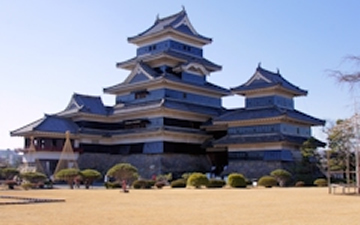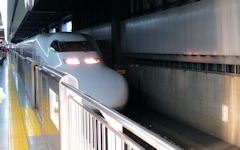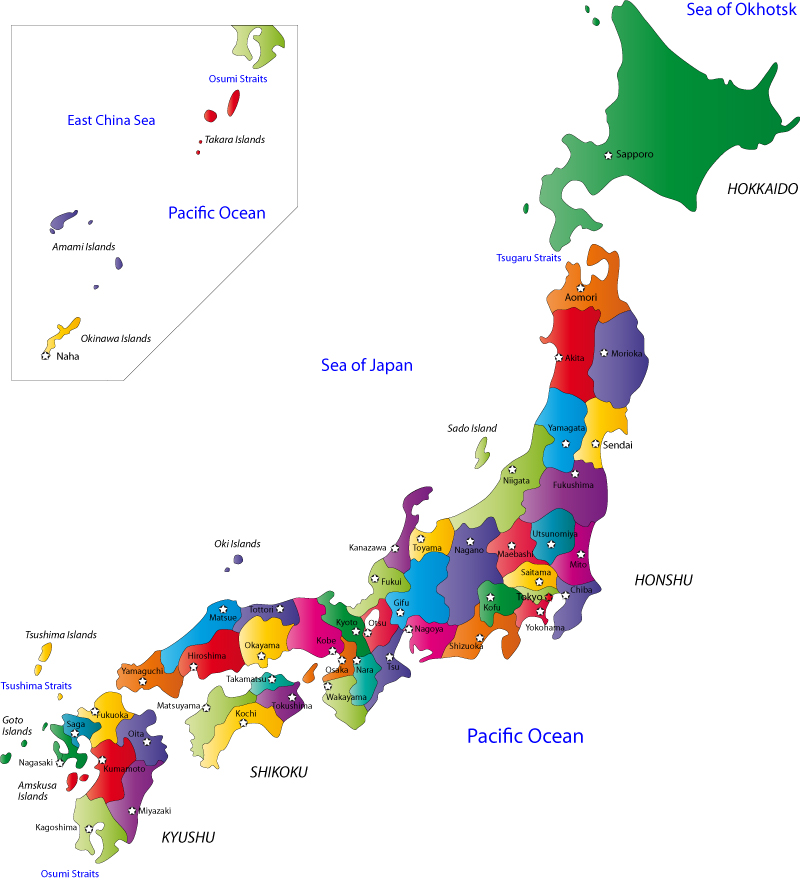Japan At A Glance
There is so much to see and do in Japan and we have been lucky enough to visit on numerous occasions. Below are links to some of our favorite memories.
Castle Hunting

There are hundreds of castles in Japan, but only twelve that are considered 'original'. Read More.
Ski Japan

There are two main ski areas in Japan - Honshu and Hokkaido - each with 100's of ski fields, and deep, dry powder. Read More.
Riding the Rail

Japan's public transport system is amazing. From the super fast "Shinkansen' to the local subway, you can get from A-B with ease. Read More.
Japan
Onsens: Natural hot springs (温泉, onsen) are numerous and highly popular across Japan. Every region of the country has its share of hot springs and resort towns, which come with them. There are many types of hot springs, distinguished by the minerals dissolved in the water. Different minerals provide different health benefits, and all hot springs are supposed to have a relaxing effect on your body and mind. Hot spring baths come in many varieties, indoors and outdoors, gender separated and mixed, developed and undeveloped. Many hot spring baths belong to a ryokan, while others are public bath houses. An overnight stay at a hot spring ryokan is a highly recommended experience to any visitor of Japan.
Shopping: Japan is a shopping paradise with a wealth of stores selling everything from traditional souvenirs and local food to the latest electronics and hottest fashion brands. Both domestic and foreign brands are represented, as are stores for all budgets, from the 100 yen shops to high-end fashion boutiques and department stores.
Large cities, such as Tokyo and Osaka, sport several shopping districts, each with their own unique character, usually grouped around major train stations. Shops are also found in shopping centers, along covered shopping arcades and in extensive underground malls. Outside of the city centers, large big box retailers, outlet malls and suburban shopping malls compete for shoppers with lots of variety.
Festivals: There are countless local festivals (matsuri) in Japan because almost every shrine celebrates one of its own. Most festivals are held annually and celebrate the shrine's deity or a seasonal or historical event. Some festival are held over several days. An important element of Japanese festivals are processions, in which the local shrine's kami (Shinto deity) is carried through the town in mikoshi (palanquins). It is the only time of the year when the kami leaves the shrine to be carried around town.

Hokkaido: An unspoiled frontier, an escape from industrialized Japan and a chance to connect with nature – although this vision of HOKKAIDŌ (北海道) is rose-tinted, Japan’s main northern island certainly has an untamed and remote quality. Over seventy percent of it is covered by forest, and wildlife is ubiquitous, both in and out of the enormous national parks, where you’ll also find snow-covered slopes, active volcanoes and bubbling onsen. This is Japan’s second-largest island, yet a mere five percent of the population lives here. Even so, cities such as the stylish capital Sapporo and historically important Hakodate are just as sophisticated and packed with facilities as their southern cousins.
Only colonized by the Japanese in the last 150 years, Hokkaidō is devoid of ancient temples, shrines and monuments over 200 years old. What it does have is a fascinating cultural history, defined by its dwindling Ainu population. Spring through autumn are the ideal times to explore the island’s six major national parks and countryside. Apart from those highlighted opposite, Shikotsu-Tōya National Park has two beautiful lakes and a volcano that only started sprouting in 1943, while the countryside around Furano bursts in colour with fields of lavender and other flowers. Come winter Hokkaidō takes on a special quality; you can ski at some of Japan’s best – and least crowded – ski resorts or view many snow and ice festivals, of which Sapporo’s giant Yuki Matsuri is the most famous.
Central Honshu: Dominated by the magnificent Japan Alps, peppered with top onsen and ski resorts, old castle- and temple-towns, and quaint old-fashioned villages in remote valleys, CENTRAL HONSHŪ offers a fantastic choice of terrain and travel possibilities. If all you want to do is admire the grand scenery – even for a day – that’s easily done thanks to the Shinkansen line that zips from Tokyo to Nagano, where you should pause long enough to visit the venerable and atmospheric temple, Zenkō-ji.
Apart from the highlights mentioned opposite, other places in the region known locally as Chubu that are worth seeing include the summer resort of Karuizawa and the charming village of Nozawa Onsen, northeast of Nagano, where you’ll find excellent ski slopes and free hot-spring baths. Hakuba is another popular skiing and outdoor activities destination, while in the southern half of Nagano-ken it’s possible to explore several immaculately preserved post towns along the old Nakasendō route from Kyoto to Tokyo, even hiking for a day between the best of them – Tsumago and Magome.
Western Honshu: Also known as Chūgoku, meaning “middle country”, Western Honshū used to be at the centre of the Japanese nation, lying between the country’s earliest settlements in Kyūshū and the imperial city of Kyoto. The region is split geographically into two distinct areas. The southern San’yō coast is blighted by heavy industry but borders the enchanting Inland Sea, while the rugged and sparsely populated northern San’in coast boasts some delightful small towns and a generally pristine landscape. The southern coast is easy to travel around, with Shinkansen lines, good local railway services and highways, while the northern coast takes more planning to tour by public transport, but easily repays the effort.
Though western Honshū is rich in history, with burial mounds on both coasts dating from the first century, it’s a more contemporary event that brings most visitors to the region. Lying midway along the San’yō coast, Hiroshima, site of the first atom bomb attack and the region’s largest city, is the one place you’ll want to stop off en route to or from Kyūshū. At the eastern end of the San’yō coast, Okayama has one of Japan’s most famous gardens, Kōrakuen, and makes a good base for visiting the beautifully preserved Edo-era town of Kurashiki or the island art project on Inujima. As you head west along the coast, one of the treasures of Hiroshima-ken is the timeless fishing village of Tomonoura with its gorgeous views across the Inland Sea. The port of Onomichi, just to the north, is also the jumping-off point for the Shimanami Kaidō, or Sea Road, which connects Honshū via a series of breathtaking bridges and islands to Imabari on Shikoku, taking in the laidback island of Ikuchi-jima en route.
The one island of the Inland Sea you won’t want to miss is Miyajima, just west of Hiroshima and site of the ancient shrine Itsukushima-jinja. On the southern coast of neighbouring Yamaguchi-ken, pause to admire the elegant Kintai-kyō bridge at Iwakuni and the spectacular view across the narrow Kanmon Straits to Kyūshū from Hino-yama in the port of Shimonoseki, at the tip of Honshū. Inland, the highlights of the prefecture’s small capital, Yamaguchi, are an impressive pagoda and classic Zen rock and moss garden.